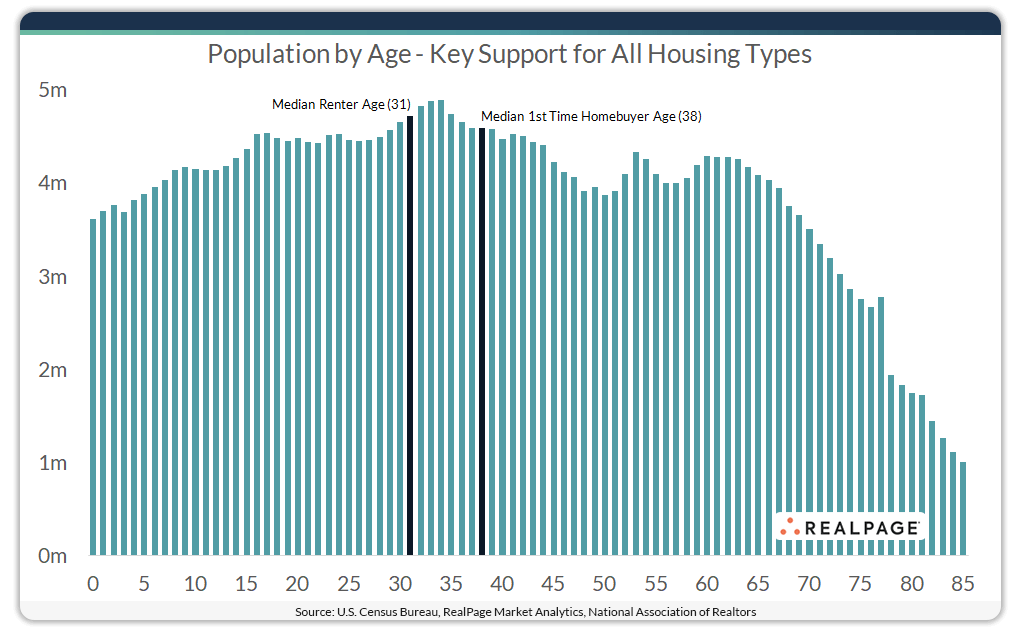Over the past decade, young adults have increasingly delayed traditional life milestones, most notably moving out of their parent’s home and getting married. More recently, that trend has shifted, and is transforming the rental housing landscape.
At the height of the pandemic in 2020, nearly 18% of Americans aged 25 to 34 were living with their parents, the highest rate in decades, according to the U.S. Census Bureau. But as cities reopened and job markets stabilized, young adults started to move out, forming new rental households and fueling demand across the U.S. In 2024, about 16% of that renter-age demographic lived with their parents. That’s still a high percentage compared to historical averages, but it’s come down notably from pandemic levels.

The recent outpouring of young renters into the rental market aligns with broader generational trends. Today’s renter is typically 31 years old, according to data from RealPage Market Analytics, while the National Association of Realtors reports the average first-time homebuyer is 38. That’s a seven-year gap that reflects how long households are staying in rental housing before transitioning to ownership. With more than 4.5 million Americans in each year of age from their late 20s through early 40s, the rental market is being shaped by a dense concentration of adults in prime earning and household formation years.
These demographic shifts are driving demand for flexible, well-located housing options that support independence, mobility and evolving lifestyle preferences. Developers and operators who understand the timing and needs of these generational cohorts will be best positioned to meet the market where it’s headed.
For more information on demographic and population trends cross the U.S., watch the webcast Market Intelligence: 2025 Demographic and Population Trends Update







